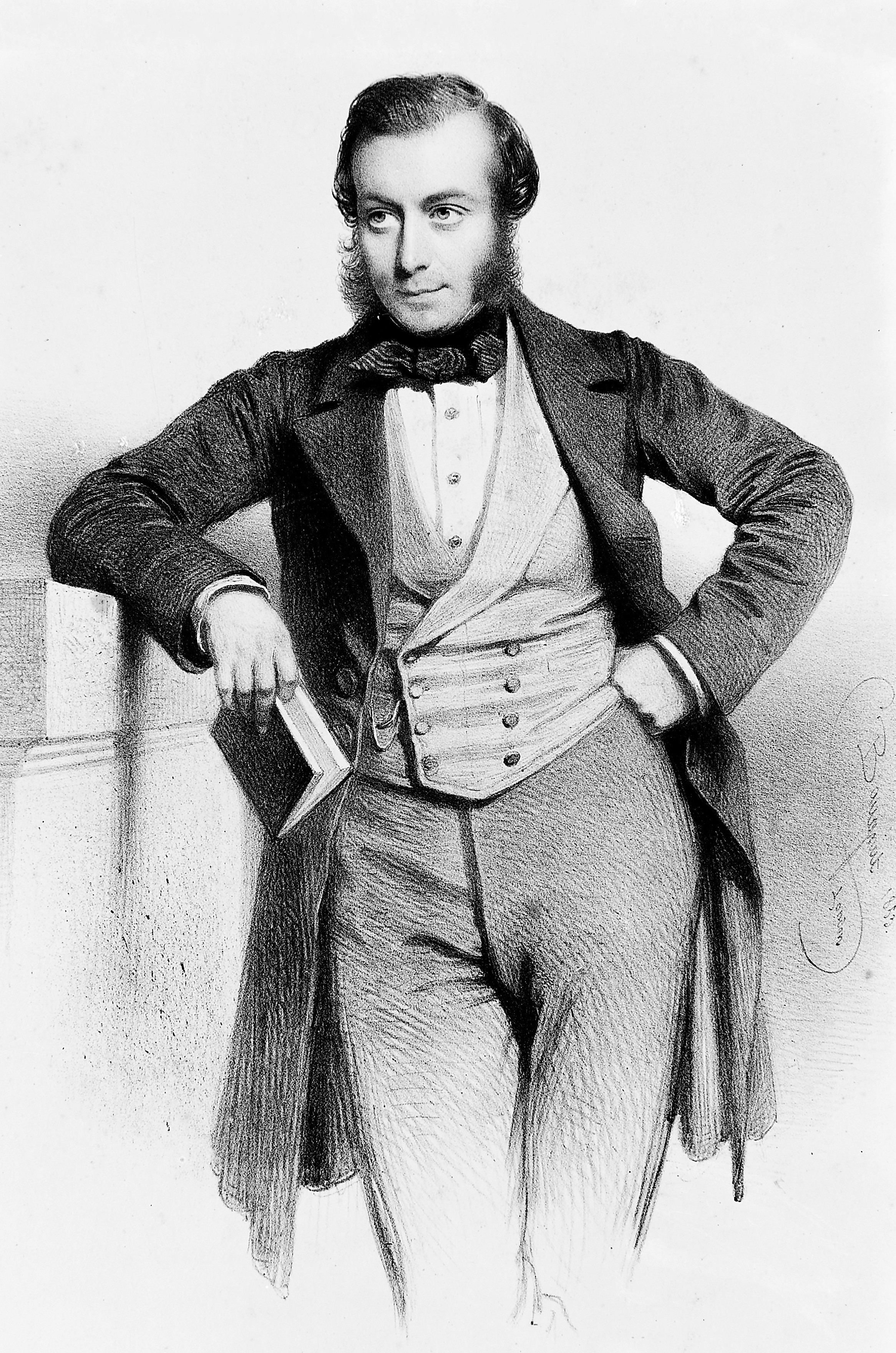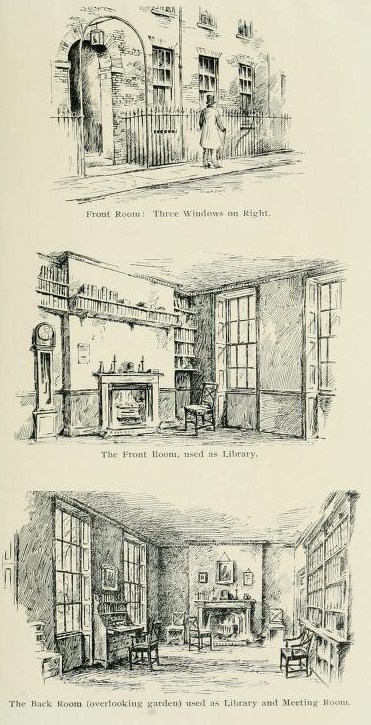|
John Eric Erichsen
Sir John Eric Erichsen, 1st Baronet (19 July 1818 – 23 September 1896) was a Danish-born British surgeon. Early life Erichsen was born in Copenhagen, the son of Eric Erichsen, a member of a well-known Danish banking family. He attended Mansion house school, Hammersmith. Surgical career Erichsen began his medical studies at University College, London under Robert Liston. Going on to Paris, he witnessed his first colotomy under Amussat before returning to London as a house surgeon. He devoted himself in the early years of his career to physiology, and lecturing on general anatomy and physiology at University College Hospital. In 1844 Erichsen was secretary to the physiological section of the British Association, and in 1845 he was awarded the Fothergillian gold medal of the Royal Humane Society for his essay on asphyxia. In 1848 he was appointed assistant surgeon at University College Hospital, and in 1850 became a full surgeon and professor of surgery, his lectures and cli ... [...More Info...] [...Related Items...] OR: [Wikipedia] [Google] [Baidu] |
Membership Of The Royal Colleges Of Surgeons Of Great Britain And Ireland
Membership of the Royal Colleges of Surgeons (MRCS) is a postgraduate diploma for surgeons in the UK and Ireland. Obtaining this qualification allows a doctor to become a member of one of the four surgical colleges in the UK and Ireland, namely the Royal College of Surgeons of Edinburgh, the Royal College of Surgeons of England, the Royal College of Physicians and Surgeons of Glasgow and the Royal College of Surgeons in Ireland. The examination, currently organised on an intercollegiate basis, is required to enter higher surgical training (ST 3+) in one of the Royal colleges. Thus today's MRCS has replaced the former MRCS(Eng), MRCS(Ed), MRCS(Glas), and MRCS(I). (Similarly, the MRCP is also now intercollegiate.) History Each college used to hold examinations independently, which is what the post-nominal ''MRCS'' used to indicate, for example, MRCS (London) specifically. After decades of discussion of possible intercollegiate MRCS and FRCS, they were implemented in the 21st ce ... [...More Info...] [...Related Items...] OR: [Wikipedia] [Google] [Baidu] |
John Eric Erichsen 1853
John is a common English name and surname: * John (given name) * John (surname) John may also refer to: New Testament Works * Gospel of John, a title often shortened to John * First Epistle of John, often shortened to 1 John * Second Epistle of John, often shortened to 2 John * Third Epistle of John, often shortened to 3 John People * John the Baptist (died ), regarded as a prophet and the forerunner of Jesus Christ * John the Apostle (died ), one of the twelve apostles of Jesus Christ * John the Evangelist, assigned author of the Fourth Gospel, once identified with the Apostle * John of Patmos, also known as John the Divine or John the Revelator, the author of the Book of Revelation, once identified with the Apostle * John the Presbyter, a figure either identified with or distinguished from the Apostle, the Evangelist and John of Patmos Other people with the given name Religious figures * John, father of Andrew the Apostle and Saint Peter * Pope John (disambigu ... [...More Info...] [...Related Items...] OR: [Wikipedia] [Google] [Baidu] |
Railway Spine
Railway spine was a nineteenth-century diagnosis for the post-traumatic symptoms of passengers involved in railroad accidents. The first full-length medical study of the condition was John Eric Erichsen's classic book, ''On Railway and Other Injuries of the Nervous System''. For this reason, railway spine is often known as Erichsen's disease. Railway collisions were a frequent occurrence in the early 19th century. Exacerbating the problem was that railway cars were flimsy, wooden structures with no protection for the occupants. Soon a group of people started coming forward who claimed that they had been injured in train crashes, but had no obvious evidence of injury. The railroads rejected these claims as fake, sometimes belittling people's pain as litigation neurosis, implying that the only real problem was the injured person making a legal claim. The nature of symptoms caused by "railway spine" was hotly debated in the late 19th century, notably at the meetings of the (Aust ... [...More Info...] [...Related Items...] OR: [Wikipedia] [Google] [Baidu] |
Vertebral Column
The spinal column, also known as the vertebral column, spine or backbone, is the core part of the axial skeleton in vertebrates. The vertebral column is the defining and eponymous characteristic of the vertebrate. The spinal column is a segmented column of vertebrae that surrounds and protects the spinal cord. The vertebrae are separated by intervertebral discs in a series of cartilaginous joints. The dorsal portion of the spinal column houses the spinal canal, an elongated body cavity, cavity formed by the alignment of the vertebral neural arches that encloses and protects the spinal cord, with spinal nerves exiting via the intervertebral foramina to innervate each body segment. There are around 50,000 species of animals that have a vertebral column. The human spine is one of the most-studied examples, as the general structure of human vertebrae is fairly homology (biology), typical of that found in other mammals, reptiles, and birds. The shape of the vertebral body does, howev ... [...More Info...] [...Related Items...] OR: [Wikipedia] [Google] [Baidu] |
Victoria Of The United Kingdom
Victoria (Alexandrina Victoria; 24 May 1819 – 22 January 1901) was Queen of the United Kingdom of Great Britain and Ireland from 20 June 1837 until Death and state funeral of Queen Victoria, her death in January 1901. Her reign of 63 years and 216 days, which was List of monarchs in Britain by length of reign, longer than those of any of her predecessors, constituted the Victorian era. It was a period of industrial, political, scientific, and military change within the United Kingdom of Great Britain and Ireland, United Kingdom, and was marked by a great expansion of the British Empire. In 1876, the British parliament voted to grant her the additional title of Empress of India. Victoria was the daughter of Prince Edward, Duke of Kent and Strathearn (the fourth son of King George III), and Princess Victoria of Saxe-Coburg-Saalfeld. After the deaths of her father and grandfather in 1820, she was Kensington System, raised under close supervision by her mother and her Comptrol ... [...More Info...] [...Related Items...] OR: [Wikipedia] [Google] [Baidu] |
Baronet
A baronet ( or ; abbreviated Bart or Bt) or the female equivalent, a baronetess (, , or ; abbreviation Btss), is the holder of a baronetcy, a hereditary title awarded by the British Crown. The title of baronet is mentioned as early as the 14th century; however, in its current usage it was created by James VI and I, James I of England in 1611 as a means of raising funds for the crown. Baronets rank below barons, but seemingly above all grand cross, knights grand cross, knight commander, knights commander and knight bachelor, knights bachelor of the British order of chivalry, chivalric orders, that are in turn below in chivalric United Kingdom order of precedence, precedence than the most senior British chivalric orders of the order of the Garter, Garter and the order of the Thistle, Thistle. Like all British knights, baronets are addressed as "Sir" and baronetesses as "Dame". They are conventionally seen to belong to the lesser nobility, although William Thoms in 1844 wrote tha ... [...More Info...] [...Related Items...] OR: [Wikipedia] [Google] [Baidu] |
Royal Medical And Chirurgical Society
The Royal Medical and Chirurgical Society of London (RMCS), created in 1805 as the Medical and Chirurgical Society of London, was a learned society of physicians and surgeons, that received a Royal charter in 1834, and a supplement charter in 1907 to create the newly merged Royal Society of Medicine. Origins The RMCS was founded in 1805 as the Medical and Chirurgical Society of London, by 26 medical men who left the Medical Society of London (founded 1773) in reaction to the autocratic style of its president, James Sims. Among its founders there were William Saunders (1743–1817), its first president; John Yelloly (1774–1842), Sir Astley Cooper (1768–1841), the first treasurer; Alexander Marcet (1770–1822) and Peter Mark Roget (1779–1869). According to its charter, the Medical and Chirurgical Society of London was founded "for the purpose of conversation on professional subjects, for the reception of communications and for the formation of a library" and served "se ... [...More Info...] [...Related Items...] OR: [Wikipedia] [Google] [Baidu] |
Royal College Of Surgeons Of England
The Royal College of Surgeons of England (RCS England) is an independent professional body and registered charity that promotes and advances standards of surgery, surgical care for patients, and regulates surgery and dentistry in England and Wales. The college is located at Lincoln's Inn Fields in London. It publishes multiple medical journals including the ''Annals of the Royal College of Surgeons of England'', the ''Faculty Dental Journal'', and the ''Bulletin of the Royal College of Surgeons of England''. History The origins of the college date to the fourteenth century with the foundation of the "Guild of Surgeons Within the City of London". Certain sources date this as occurring in 1368. There was an ongoing dispute between the surgeons and barber surgeons until an agreement was signed between them in 1493, giving the fellowship of surgeons the power of incorporation. This union was formalised further in 1540 by Henry VIII of England, Henry VIII between the Worshipful Compa ... [...More Info...] [...Related Items...] OR: [Wikipedia] [Google] [Baidu] |
Germ Theory Of Disease
The germ theory of disease is the currently accepted scientific theory for many diseases. It states that microorganisms known as pathogens or "germs" can cause disease. These small organisms, which are too small to be seen without magnification, invade animals, plants, and even bacteria. Their growth and reproduction within their hosts can cause disease. "Germ" refers not just to bacteria but to any type of microorganism, such as protists or fungi, or other pathogens, including parasites, viruses, prions, or viroids. Diseases caused by pathogens are called infectious diseases. Even when a pathogen is the principal cause of a disease, environmental and hereditary factors often influence the severity of the disease, and whether a potential host individual becomes infected when exposed to the pathogen. Pathogens are disease-causing agents that can pass from one individual to another, across multiple domains of life. Basic forms of germ theory were proposed by Girolamo Fracastoro ... [...More Info...] [...Related Items...] OR: [Wikipedia] [Google] [Baidu] |
Robert Koch
Heinrich Hermann Robert Koch ( ; ; 11 December 1843 – 27 May 1910) was a German physician and microbiologist. As the discoverer of the specific causative agents of deadly infectious diseases including tuberculosis, cholera and anthrax, he is regarded as one of the main founders of modern bacteriology. As such he is popularly nicknamed the father of microbiology (with Louis Pasteur), and as the father of medical bacteriology. His discovery of the anthrax bacterium ('' Bacillus anthracis'') in 1876 is considered as the birth of modern bacteriology. Koch used his discoveries to establish that germs "could cause a specific disease" and directly provided proofs for the germ theory of diseases, therefore creating the scientific basis of public health, saving millions of lives. For his life's work Koch is seen as one of the founders of modern medicine. While working as a private physician, Koch developed many innovative techniques in microbiology. He was the first to use the oil ... [...More Info...] [...Related Items...] OR: [Wikipedia] [Google] [Baidu] |
Louis Pasteur
Louis Pasteur (, ; 27 December 1822 – 28 September 1895) was a French chemist, pharmacist, and microbiologist renowned for his discoveries of the principles of vaccination, Fermentation, microbial fermentation, and pasteurization, the last of which was named after him. His research in chemistry led to remarkable breakthroughs in the understanding of the causes and preventions of diseases, which laid down the foundations of hygiene, public health and much of modern medicine. Pasteur's works are credited with saving millions of lives through the developments of vaccines for rabies vaccine, rabies and anthrax vaccine, anthrax. He is regarded as one of the founders of modern bacteriology and has been honored as the "father of bacteriology" and the "father of microbiology" (together with Robert Koch; the latter epithet also attributed to Antonie van Leeuwenhoek). Pasteur was responsible for disproving the doctrine of spontaneous generation. Under the auspices of the French Aca ... [...More Info...] [...Related Items...] OR: [Wikipedia] [Google] [Baidu] |
Joseph Lister
Joseph Lister, 1st Baron Lister, (5 April 1827 – 10 February 1912) was a British surgeon, medical scientist, experimental pathologist and pioneer of aseptic, antiseptic surgery and preventive healthcare. Joseph Lister revolutionised the Surgical technique, craft of surgery in the same manner that John Hunter (surgeon), John Hunter revolutionised the science of surgery. From a technical viewpoint, Lister was not an exceptional surgeon, but his research into bacteriology and infection in wounds revolutionised surgery throughout the world. Lister's contributions were four-fold. Firstly, as a surgeon at the Glasgow Royal Infirmary, he introduced carbolic acid (modern-day phenol) as a sterilization (microbiology), steriliser for surgical instruments, patients' skins, surgical suture, sutures, surgeons' hands, and wards, promoting the principle of antiseptics. Secondly, he researched the role of inflammation and tissue perfusion in the healing of wounds. Thirdly, he advanced diag ... [...More Info...] [...Related Items...] OR: [Wikipedia] [Google] [Baidu] |









